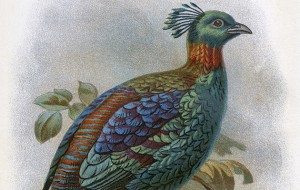The Grey junglefowl is very distinctive, with neck hackles dotted with pale yellow spots, and its feathers have been in such high demand a ban was put in place in 1968 on exporting the birds from India. For a pheasant closer to home, read Caucasian pheasant: the Old English Blackneck.…
Pheasant shooting
Satyr tragopan: the Crimson-horned pheasant
The Satyr tragopan, also known as the Crimson-horned pheasant, can be found in thickly forested mountain areas of India, Tibet, Bhutan, China and Nepal, and its appearance is as striking as its home. With deep crimson feathering interspersed with white spots, this pheasant is prized for its appearance. For another…
Impeyan pheasant: Himalayan monal
The Impeyan pheasant, also known as the Himalayan monal, is far bigger than other pheasants, standing at more than 2ft tall. It also lives between 8,000-15,000ft, which is higher than any other pheasant. For another pheasant that can be found in the Himalayas, read about the striking Satyr tragopan: the…
Caucasian pheasant: the Old English Blackneck
The Caucasian pheasant was originally brought to England by the Romans, but a long history hasn’t saved their ever declining numbers. Finding a pure Caucasian pheasant is very rare, and while you can buy the birds from game farms they are usually cross-breeds. The World Pheasant Association (WPA) are part…
Perazzi DC side-by-side review
Perazzi is famous for its over-and-unders but this month we test the new DC (Double Caccia) detachable-lock, side-by-side. The gun weighs in at 73⁄4lb with 30in, 3in-chambered barrels. It has a single, non-selective trigger, non-auto safety (an auto version is available), fixed three-quarters and full chokes (with other constriction and…
Video: ringnecked pheasant
With different strains of pheasant common on shoot days, take a close look at the ringnecked pheasant










